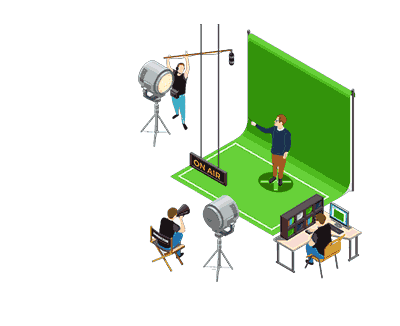Purpose and function of a poster:
A poster should be heard, told, persuaded and stimulated. A poster will affect your choices by means of text and images if the audience is addressed. An optimally designed poster attracts the curiosity and intellect of the viewer, but also the emotional side unconsciously. Finally, the visitor’s response to the poster is focused on his desires, his penchants and his social situation in particular. As a consequence, a poster can be interpreted differently, depending on the context, history, social and political realities of each audience.
Mission of a poster:
A poster (optical views by form and colour, iconic ones) (original motifs and texts), an interesting layout (original font, image, and colour combination) and a clearly defined message or statement are necessary to be successful. While designing posters, important design concepts must be observed: First, the target audience must be identified: send the poster message to a clearly defined target group. For the identified target group, an effective poster should always be made. Also specify the fonts: a long-haul effect should be achieved by the selected font, so that the text is readable by more than 100 inches.

Text selection and positioning:
The details and contents must be easy to understand, unforgettable and compelling. The comments should therefore be simple and succinct. In addition, keywords and key phrases make decoding the message simpler for the audience. Finally, the central statement on the poster should be incorporated into the whole project.
Dont put the text on the edge of the panel even though the edges of the vintage posters are very well crafted with texts. The font color should be chosen so that the background contrasts strongly.
Shade selection:
Use colours that correlate to the message and high contrast for a better distance effect. Rich colours in a poster are often a eye catcher.
Visual material:
Magazines should visually support messages. You must be directly connected to the poster is core message. The picture material chosen should not overwhelm the poster and confuse the viewer. Therefore, a dominant influence of the combined images should not distract from the readability of the font.
There are several questions that you should ask yourself when reviewing your draft poster designs to ensure that your posters meet the standard for successful poster design:
1. Does the message address the target group clearly?
2. Is the communication goal creative adapted to the target audience??
3. How nice is the visualization / credibility of the message?
4. Is the poster going to attract public attention?
5. Is the model simple and comprehensible?
6. Is the poster originally designed?
Evaluation criteria for posters:
Before the poster design begins, specific requirements for a poster design should be defined. The most important facts are:
Content and transmitted information
Font/text/text positioning
Relation between picture material/text
Colour selection
Format/layout
Originality / design idea
Artistic overall impression
The AIDA formula:
The receiver perceives an advertisement or a promotional poster in sequential phases outlined in the AIDA formula.
Attention: A poster attracts attention
Interest: The recipient’s interest in studying the poster
Desire: The message provokes a desire to acquire the advertised product or
service.
Action: Activity is performed by the audience to receive a product or service
Characteristics of good poster design:
Public displays (pillar, building, road, car parking etc.) have many external influences including the type of environment, lighting conditions, weather conditions, competition with other media close by and partial covering by persons or objects. Posters in public areas are subject to various external influences.
The sum of these factors and the circumstances under which posters are not always suitable have a great influence on their exposure and preparation. For a good poster layout, all considerations give rise to the most important characteristics:
Format / Size: a large format will usually be more visible, but the poster is more thin, very bright and colourful than a large, dark colored poster Background / paper colour: use light, not very dark. Contrast should be taken into account in darker colours.
Contrast: the strong contrasts are striking; however the overload of contrasts should be avoided. ( for example, dark-light or complementary), but overloads of contrasts should be avoided. Size and visibility of the pattern: selection of a attractive pattern in a formatting size. Title/slogan: the best and most appealing phrase, eg. Clarification, question, or antithesis. Type and size of the font: select a font that is readable and in keeping with the poster “character”. Remote readability: all the points mentioned have a significant impact on poster perception. The scope of use should be considered whether large-format city ads or little posters for a literally reading, normally suspended by buildings. Contents/information: product information, dates, locations etc. are visible and are included in the “exposed” poster areas.
A few more points for a successful poster to be considered:
Dark writing on a light background is more resilient than its negative edition.
Portrait posters with short text lines can often be better read and placed (e.g. in company displays, on doors, etc.).
Too many color areas should be avoided (without references to the content),
since this can detract from the principal poster text.
Too many different fonts and fonts should be avoided as a fundamental rule for good typography.
An organized format encourages learning and clarity.








 WhatsApp us
WhatsApp us